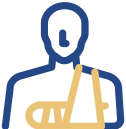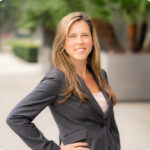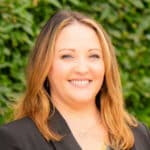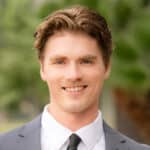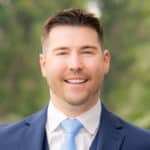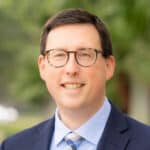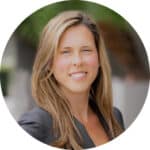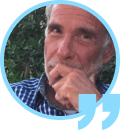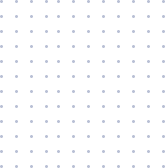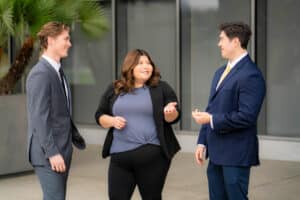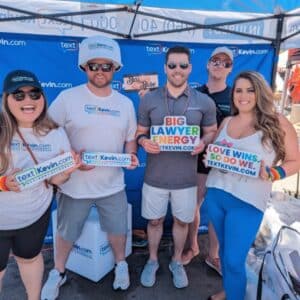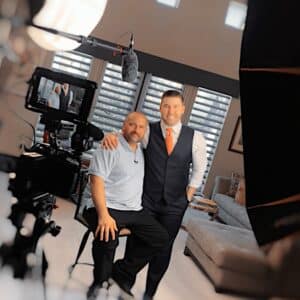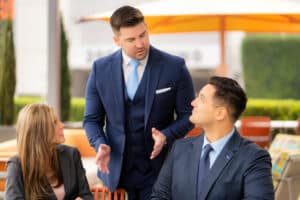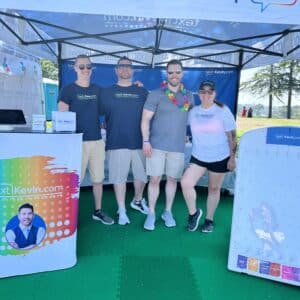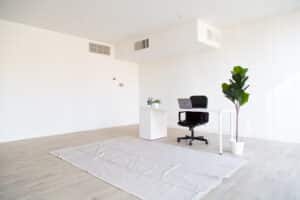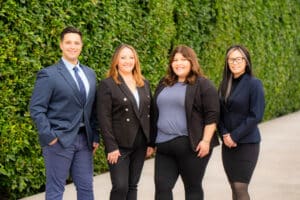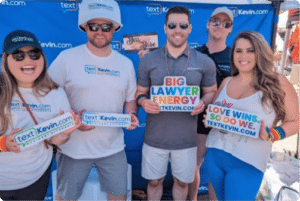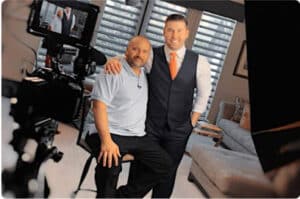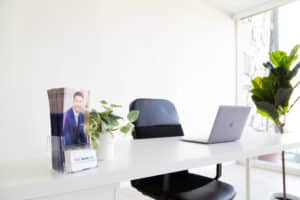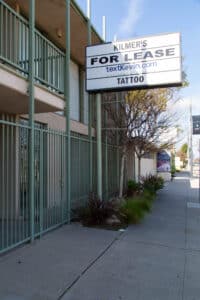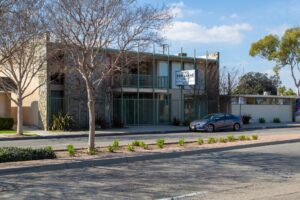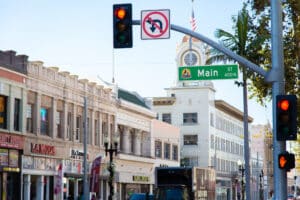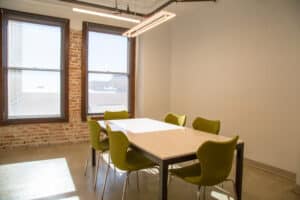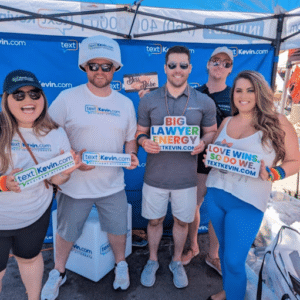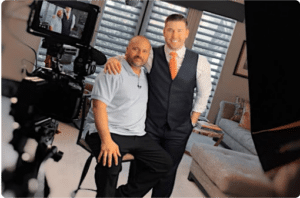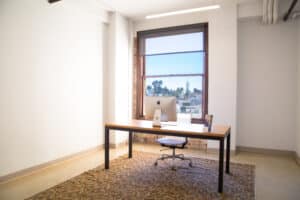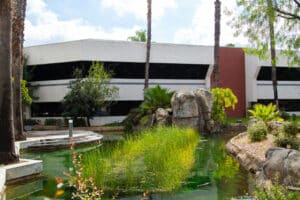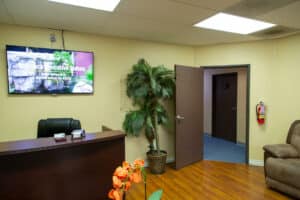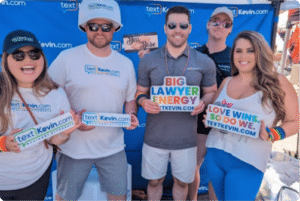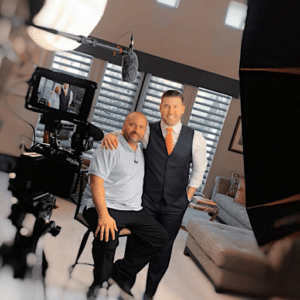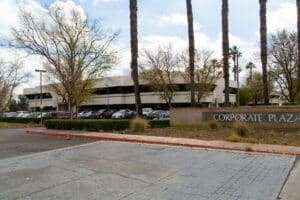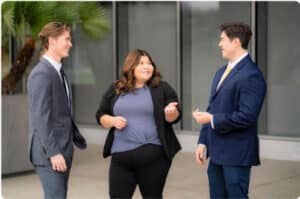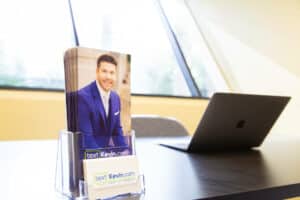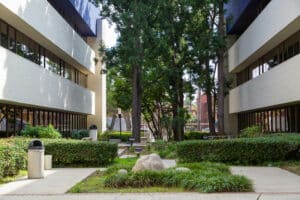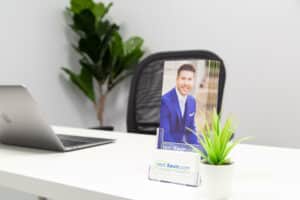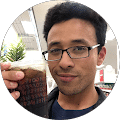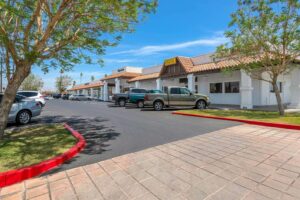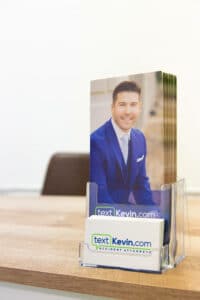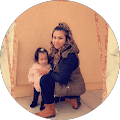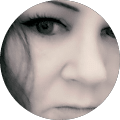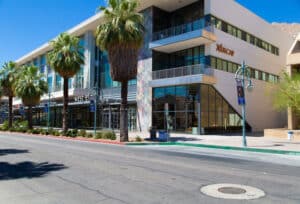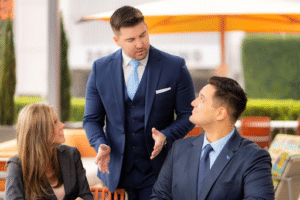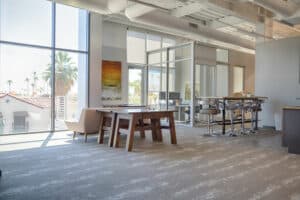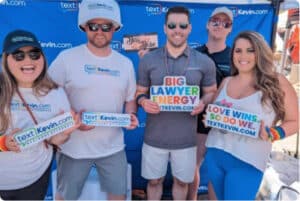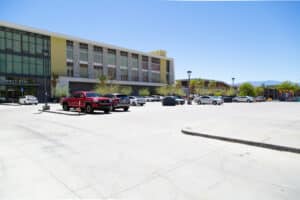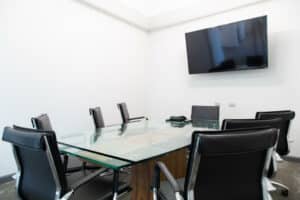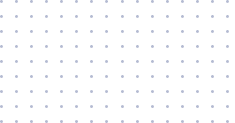Thousands of people in San Francisco rely on cars for daily commuting and leisure activities. However, driving in San Francisco can be risky. Car accidents are a common occurrence in San Francisco, causing serious harm to drivers, passengers, pedestrians, and cyclists. In 2021, there were 3,582 fatal crashes and 193,564 injury crashes in California, with many of them happening in San Francisco. Knowing the most dangerous locations and avoiding risky behaviors can help you stay safe on the road.
If you have been injured in a car accident in San Francisco, you need a strong legal advocate on your side. At Text Kevin Accident Attorneys, we have the experience and the skills to help you get the compensation you deserve for your medical expenses, lost wages, and pain and suffering. We offer a free consultation with a San Francisco car accident lawyer who can evaluate your case and advise you on the best course of action. Contact us today, and let us fight for your rights.
San Francisco Car Accident Statistics
Navigating the busy streets of San Francisco is a daily necessity for many, blending the convenience of urban commuting with the inherent risks of driving. The city’s roads witness numerous vehicles each day, leading to accidents that range from minor to severe. Recent analyses show an encouraging 22% decline in accidents resulting in injuries and deaths from 2019 to 2023. Nevertheless, with 2,596 accidents reported in 2023 alone, the importance of vigilant and safe driving practices remains critical.
Total Injuries & Fatalities
- 2019: 3,331
- 2020: 2,267
- 2021: 2,678
- 2022: 2,661
- 2023: 2,596
Statistics on Fatal and Injury Causing Collisions in San Francisco
In San Francisco, we examined the trend of accidents resulting in injuries and fatalities over the past five years. Surprisingly, there was a noticeable 22% decrease in accidents from 2019 to 2023. Despite this decline, the city witnessed a substantial number of incidents, with a total of 2,596 reported in 2023 alone. This suggests a continuing need for robust safety measures and awareness campaigns to further reduce the occurrence of such accidents in the future.
Primary Collision Factor
- Right-of-Way: 532
- Unsafe Speed: 470
- Traffic Signals/Signs: 389
- Improper Turning: 327
- Following Too Closely: 123
- All Other Factors: 755
Statistics on Common Causes of Collisions in San Francisco
Notably, analysis of collision factors reveals a concerning trend: failure to yield the right of way emerged as the primary cause of accidents in San Francisco last year. Addressing this factor could significantly contribute to further reducing the number of accidents and ensuring safer streets for all residents and visitors. Efforts in education and enforcement should be intensified to curb this concerning trend and promote responsible driving behaviors throughout the city.
Which Roads and Intersections in San Francisco Are the Most Dangerous?
Car accidents in San Francisco can happen in any location, with some areas being more prone to accidents:
Downtown San Francisco
Downtown San Francisco is the city’s central business district, where many of the major attractions, landmarks, and skyscrapers are located. Some of the places in downtown San Francisco that are prone to car accidents are:
- Market Street: This is the city’s main thoroughfare, running from the Embarcadero to the Castro District. Market Street is often crowded with vehicles, buses, streetcars, bicycles, and pedestrians, creating a high potential for collisions. According to a report by the San Francisco Municipal Transportation Agency, Market Street had the most injury collisions of any street in the city in 2019.
- Union Square: This is a popular shopping, dining, and entertainment district in the heart of downtown San Francisco. Union Square is surrounded by busy streets, such as Geary, Powell, Post, and Stockton, where drivers have to contend with traffic signals, crosswalks, and pedestrians. Union Square also hosts many events and festivals throughout the year, which can increase the traffic volume and congestion in the area.
- The Financial District: This is the area where many of the city’s financial institutions, corporate headquarters, and law firms are located. The Financial District is bounded by Market Street, the Embarcadero, Broadway, and Kearny Street. The Financial District has many one-way streets, narrow lanes, and parking garages, which can pose challenges for drivers. The Financial District also has a high concentration of pedestrians, especially during the morning and evening rush hours, when workers commute to and from their offices.
Lombard Street
Lombard Street is a famous street in San Francisco, known for its steep, one-block section with eight hairpin turns, located between Hyde and Leavenworth Streets. Lombard Street is often referred to as the “crookedest street in the world” and attracts millions of tourists every year. Some of the places in Lombard Street that are prone to car accidents are:
- The Crooked Section: This is the most iconic and photographed part of Lombard Street, where drivers have to navigate the sharp curves and steep incline. The crooked section has a speed limit of 5 mph and is regulated by stop signs at each intersection. However, some drivers may not follow the rules or may lose control of their vehicles, resulting in crashes. The crooked section also has many pedestrians, who may cross the street without paying attention to the traffic or may pose a distraction for the drivers.
- The Intersection with Hyde Street: This is the top of the crooked section, where Lombard Street intersects with Hyde Street, which is part of the famous cable car route. The intersection with Hyde Street is a busy and complex junction where drivers have to yield to the cable cars and watch out for pedestrians and cyclists. The intersection with Hyde Street also has a steep downhill slope, which can make it difficult for drivers to stop or slow down.
- The Intersection with Van Ness Avenue: This is the bottom of Lombard Street, where it intersects with Van Ness Avenue, which is a major north-south arterial road in San Francisco. The intersection with Van Ness Avenue is a large and congested intersection where drivers have to deal with multiple lanes, traffic signals, and turning movements. The intersection with Van Ness Avenue also has a high volume of traffic, especially during peak hours, when drivers may be impatient or aggressive.
The Bay Bridge
The Bay Bridge is a complex of bridges that spans the San Francisco Bay, connecting San Francisco to Oakland and other cities in the East Bay. The Bay Bridge consists of two sections: the western section, which is a double-decked suspension bridge, and the eastern section, which is a combination of a cantilever bridge, a causeway, and a self-anchored suspension bridge. Some of the places in the Bay Bridge that are prone to car accidents are:
- The Toll Plaza: This is the entrance to the Bay Bridge from the East Bay, where drivers have to pay a toll to cross the bridge. The toll plaza has multiple lanes, some of which are designated for cash payments and some of which are designated for electronic payments. The toll plaza can cause traffic backups and delays, especially during peak hours, when drivers may have to wait in long queues or switch lanes abruptly, leading to collisions.
- The S-Curve: This is a sharp curve in the eastern section of the Bay Bridge, located near Yerba Buena Island. The S-curve was added in 2009 as part of the construction of the new eastern span of the bridge. The S-curve has a speed limit of 40 mph and is marked by signs, cones, and barriers. However, some drivers may not be aware of the curve or may drive too fast, resulting in crashes. The S-curve also has a narrow shoulder, which can make it difficult for emergency vehicles to access the scene of an accident.
- The Treasure Island Exit: This is an exit from the western section of the Bay Bridge, located on the lower deck, that leads to Treasure Island, a man-made island in the middle of San Francisco Bay. The Treasure Island exit is a short and sharp ramp that requires drivers to slow down and merge with the traffic on the island. The Treasure Island exit can cause traffic congestion and confusion, especially for drivers who are unfamiliar with the exit or who may miss the exit, leading to collisions.
19th Avenue/State Route 1
19th Avenue is a major north-south thoroughfare, running through the western part of San Francisco, from Lake Merced to the Golden Gate Bridge. 19th Avenue is also part of State Route 1, a state highway that runs along the Pacific coast of California. Some of the places on 19th Avenue/State Route 1 that are prone to car accidents are:
- The Intersection with Sloat Boulevard: This is a large and busy intersection where 19th Avenue intersects with Sloat Boulevard, a major east-west arterial road in San Francisco. The intersection with Sloat Boulevard has multiple lanes, traffic signals, and turning movements, which can create conflicts and confusion for drivers. The intersection with Sloat Boulevard also has a high concentration of pedestrians, especially students from the nearby Lowell High School and San Francisco State University, who may cross the street without following the signals or may pose a distraction for the drivers.
- The Intersection with Lincoln Way: This is another large and busy intersection where 19th Avenue intersects with Lincoln Way, which is the main road that runs along the southern edge of Golden Gate Park. The intersection with Lincoln Way has similar features and challenges as the intersection with Sloat Boulevard, such as multiple lanes, traffic signals, and turning movements, as well as a high concentration of pedestrians, especially visitors to the park, who may cross the street without following the signals or may pose a distraction for the drivers.
- The Golden Gate Bridge: This is the iconic suspension bridge that spans the Golden Gate, the strait that connects the San Francisco Bay to the Pacific Ocean. The Golden Gate Bridge is the northern terminus of 19th Avenue/State Route 1 and is one of the most popular tourist attractions in San Francisco. The Golden Gate Bridge has six lanes, three in each direction, which can be adjusted according to the traffic demand. The Golden Gate Bridge also has strong winds, fog, and low visibility, which can affect driving conditions and safety.
Van Ness Avenue
Van Ness Avenue is a major north-south arterial road in San Francisco, running from Market Street to Lombard Street. Van Ness Avenue is also part of U.S. Route 101, a federal highway that runs along the west coast of the United States. Some of the places in Van Ness Avenue that are prone to car accidents are:
- The Civic Center Area: This is the area where many of the city’s government, cultural, and civic institutions are located, such as the City Hall, the Opera House, the Symphony Hall, and the Library. The Civic Center area has many cross streets, such as Grove Street, McAllister Street, and Turk Street, where drivers have to deal with traffic signals, crosswalks, and pedestrians. The Civic Center area also hosts many events and parades throughout the year, which can increase the traffic volume and congestion in the area.
- The Intersection with Lombard Street: This is the northern end of Van Ness Avenue, where it intersects with Lombard Street, which is a major east-west arterial road in San Francisco, as well as the famous crooked street. The intersection with Lombard Street has multiple lanes, traffic signals, and turning movements, which can create conflicts and confusion for drivers. The intersection with Lombard Street also has a high concentration of pedestrians, tourists, and cyclists, who may cross the street without following the signals or may pose a distraction for the drivers.
What Should I Do After a Car Accident in San Francisco?
Document the Accident
Documenting the accident means gathering as much data as possible from the scene of the accident. This entails documenting the precise time and place where the accident occurred, current weather conditions, and any pertinent traffic signs or signals. Provided it’s safe, capture photos or videos of the scene, including vehicle positions, any noticeable damages, skid marks, and the condition of the road. Additionally, collect contact details from all involved parties—names, addresses, phone numbers, and insurance information — as well as from witnesses. This data is crucial for insurance claims and legal matters, offering a detailed account of the event.
Follow Medical Advice
Following your doctor’s instructions after a car accident is not only important for your physical recovery but also impacts any potential legal case. Attend all medical appointments, follow treatment plans, take prescribed medications, and attend recommended therapy sessions or rehabilitation. Adherence to medical advice demonstrates the seriousness of your injuries and your commitment to recovery, which is important in legal and insurance contexts. Ignoring medical advice or missing appointments can negatively affect your insurance claim and any potential compensation.
Notify Your Insurance
Promptly inform your insurance company about the car accident. Be mindful when communicating; provide only the facts of the accident without making assumptions about who was at fault or discussing the extent of your injuries in detail. Remember that insurance adjusters might use your statements to reduce your claim. Consulting a lawyer before making detailed statements to your insurance is advisable. They can help you determine what information to share to safeguard your interests.
Preserve Evidence
To preserve evidence after a car accident, do not repair your vehicle until an insurance adjuster has evaluated it for damage, as repairs might eliminate signs of the accident’s severity. Keep any personal items damaged in the accident, like clothing, and document your injuries with photos. This physical evidence is powerful in demonstrating the accident’s extent and linking it to your injuries, crucial for insurance claims and legal actions.
We’ll Fight to Recover Compensation for All of Your Car Accident Injuries
Whiplash and Neck Injuries
Rear-end collisions often lead to neck injuries and whiplash. This condition arises from the head’s rapid movement during impact, causing neck strain. Symptoms include neck pain, stiffness, headaches, dizziness, blurred vision, or fatigue. While some recover in a few weeks, others face long-term neck pain and complications. It’s crucial to seek medical attention after a collision, as untreated whiplash can worsen. Treatment usually involves pain management, physical therapy, and sometimes a cervical collar for neck support.
Concussions and Traumatic Brain Injuries
Concussions and traumatic brain injuries (TBIs) can occur in any car accident, with symptoms ranging from mild headaches and confusion to severe unconsciousness and cognitive issues. These injuries, caused by sudden brain movement inside the skull, can have both short-term and long-lasting effects on memory, concentration, and personality. Immediate medical attention is vital, as symptoms are not always obvious initially. Treatment may include rest, medication, and therapy, with surgery needed in severe cases to relieve brain pressure or bleeding.
Broken Bones and Fractures
Car crashes often lead to broken bones, especially in the arms, legs, and ribs, due to the intense impact. Injuries can vary from simple fractures, where the bone is cracked, to severe ones, where the bone breaks into pieces or sticks out through the skin. Common signs are pain right away, swelling, and difficulty moving the injured area. The treatment, which could include casts, splints, or surgery, depends on how bad and where the fracture is. Healing time differs; some breaks heal quickly in weeks, while others take longer and might need physical therapy to fully recover.
Spinal Cord Injuries
Spinal cord injuries from car accidents can lead to permanent disability. These injuries happen when the spine gets damaged, causing loss of movement or feeling below where the injury is. The force from a crash can break or shift spine bones, hurting the spinal cord. Symptoms include pain, weakness, trouble with coordination, or even paralysis, which can be full or partial. How much and what part of the body is affected depends on the injury’s severity and location. Treatment involves stabilizing the spine, medication to lessen swelling, and lots of rehab. Although some improvement is possible, many with spinal cord injuries face lifelong challenges and need ongoing care.
Tip
After a car accident in San Francisco, it’s crucial to seek medical attention promptly, even if you feel fine initially. Some injuries, like whiplash and concussions, may not manifest symptoms immediately but can worsen over time. Early diagnosis and treatment can significantly improve recovery outcomes.
How Much Does It Cost to Hire a Car Accident Lawyer?
Concerns about the cost of hiring a car accident lawyer in San Francisco after an accident are understandable. Accidents can bring significant financial burdens, such as large repair expenses, lost earnings if you’re unable to work, and accumulating medical bills.
At Text Kevin Accident Attorneys, we adopt a contingency fee model for all our cases. This means you can enlist a lawyer without needing to pay any fees upfront. We only receive legal fees if we win your case. If we don’t manage to obtain a settlement or win at trial for you, you owe us nothing.
Local Results
Female Awarded $100,000 Settlement After Being Struck on I-10 Freeway by Driver Making Unsafe Lane Change
Case Type Car Accident Location California Settlement $100,000.00
What Causes Car Accidents in San Francisco, CA?
San Francisco allows individuals injured in car accidents due to another’s negligence to seek compensation. Key factors include:
Distracted Driving
Distracted driving is a significant issue in San Francisco, just as it is throughout California. Any activity that diverts a driver’s attention from the road falls under this category. This includes using a cell phone for talking or texting, which is explicitly prohibited under California Vehicle Code Section 23123. Texting while driving is specifically addressed under California Vehicle Code Section California Vehicle Code Section 23123.5. These laws aim to prevent accidents caused by drivers not fully concentrating on driving. In San Francisco, with its bustling streets and frequent distractions, adhering to these laws is crucial. Violation of these laws can result in a driver being considered negligent and liable for any resulting damages from an accident.
Pro Tip
Remember, distracted driving encompasses more than just texting or talking on your phone. It includes any activity that takes your attention away from the road. Stay vigilant and eliminate distractions to reduce the risk of accidents, especially in busy areas like San Francisco where hazards abound.
Speeding
Speeding is a common cause of accidents in San Francisco, a city known for its steep hills and busy streets. Under California Vehicle Code Section 22350, it is illegal to drive at a speed that is unsafe for current conditions, which sometimes means driving slower than the posted speed limit. In San Francisco, conditions that might require slower driving include dense urban traffic, foggy weather, and areas with frequent pedestrian activity. Drivers who cause accidents by speeding or driving too fast for the conditions can be held responsible for the damages caused. They are considered to have breached the required standard of care by law.
Failure to Yield
Failure to yield the right of way is a prevalent form of negligence in San Francisco. Busy intersections, especially those near landmarks like Fisherman’s Wharf or the Golden Gate Bridge and areas with high pedestrian traffic, are common sites for these types of incidents. Per California Vehicle Code Section 21801, drivers must yield the right of way to other vehicles and pedestrians in various situations, such as when making left turns or when pedestrians are in crosswalks. Accidents often occur in San Francisco when drivers ignore these laws, leading to collisions with other vehicles or pedestrians. In such cases, the driver who failed to yield is typically found at fault and is responsible for any injuries and losses incurred.
Further Reading
- A Driver Waiting to Make a Left Turn When the Traffic Light Turns Green Should
- When Turning Left at an Intersection (How To)
Note
Be extra cautious when driving near landmarks and tourist hotspots like Fisherman’s Wharf or the Golden Gate Bridge, where pedestrian traffic is heavy. Anticipate unexpected movements and prioritize pedestrian safety to avoid accidents.
As the Managing Partner, I take pride in leading our team to provide exceptional legal support for individuals in San Francisco, California, facing car accident challenges. With a focus on excellence and client satisfaction, we strive to deliver top-notch representation and achieve favorable outcomes.
San Francisco Car Accident FAQs
Red flags for whiplash include symptoms such as severe neck pain, headaches, dizziness, numbness or weakness, and changes in vision or hearing. Seeking medical attention promptly is crucial.
In California’s point system, accidents can result in one point on your driving record. The points may affect your insurance rates, and accumulating too many points can lead to license suspension.
The average settlement for a car accident in California varies widely based on factors like the severity of injuries, medical expenses, and other damages. Consult with a personal injury attorney for a more accurate estimate.
If a claim is taking too long, you can follow up with the insurance company, provide any requested information promptly, and consider seeking legal advice. Sometimes, a lawyer’s involvement can expedite the process.
You can reject a low settlement offer by providing a counteroffer backed by evidence of your damages. Consider consulting with a personal injury attorney to guide you through the negotiation process.
The value of a herniated disc settlement depends on various factors, including the severity of the injury, medical expenses, and long-term effects. Consult with a personal injury attorney for an accurate assessment based on your specific case.
Contact Our San Francisco Car Accident Attorneys Today for Legal Help
If you’ve experienced a car crash in San Francisco, don’t hesitate to reach out to Text Kevin Accident Attorneys. Our focus on personal injury law and extensive experience empower us to fight for fair compensation for our clients. We operate on a contingency fee basis, so you owe us nothing unless we win your case. For a no-cost case evaluation with a San Francisco car accident lawyer who has recovered millions of dollars for injured clients, contact our office today.
San Francisco FAQs
Exploring San Francisco offers a rich tapestry of experiences, from walking across the iconic Golden Gate Bridge to enjoying the historic cable cars and visiting Alcatraz Island. Don’t miss out on the vibrant neighborhoods like Chinatown and the Mission District, each offering its unique culture and charm. Whether you’re here for the sights, the history, or the culture, San Francisco has something for everyone.
For accommodations in San Francisco, options range from luxury hotels in the heart of downtown, like the Fairmont San Francisco, to charming bed and breakfasts in quieter neighborhoods such as Nob Hill and the Marina District. Consider staying near Union Square for shopping and dining convenience, or choose a waterfront view near Fisherman’s Wharf for a truly memorable stay.
San Francisco’s dining scene is as diverse as its population, offering everything from high-end Michelin-star restaurants to unique food trucks. For a classic San Francisco experience, try the seafood at Fisherman’s Wharf, sample authentic Chinese cuisine in Chinatown, or enjoy the innovative dishes in the Mission District. Don’t forget to try a sourdough bread bowl filled with clam chowder!
San Francisco covers a compact area of about 49 square miles (127 square kilometers), making it relatively small in size but immense in cultural, historical, and geographical diversity. Its unique terrain includes steep hills, scenic coastline, and famous landmarks, all packed into a small, walkable city that’s easy to explore.
San Francisco is renowned for its iconic Golden Gate Bridge, historic cable cars, and beautiful Victorian homes. It’s also famous for its progressive culture, tech innovation with Silicon Valley nearby, and landmarks such as Alcatraz Island and Fisherman’s Wharf. The city’s diverse neighborhoods and rich history of social movements add to its unique identity.
San Francisco has a population of approximately 875,000 residents, making it the fourth-most populous city in California. Despite its relatively small geographical size, it’s a densely packed city with a vibrant mix of cultures and backgrounds, contributing to its dynamic and cosmopolitan atmosphere.
San Francisco Points Of Interest
An iconic suspension bridge offering breathtaking views of the city and the bay.
Location: Golden Gate Brg, San Francisco, CA
Website: goldengate.org
Home to the infamous former federal prison, now a popular tourist attraction with guided tours.
Location: Alcatraz Island, San Francisco Bay, CA 94133
Website: nps.gov
A popular pier with shops, restaurants, sea lions, and panoramic views of the bay.
Location: The Embarcadero, San Francisco, CA 94133
Website: pier39.com
A vast urban park with museums, gardens, lakes, and recreational opportunities.
Location: 501 Stanyan St San Francisco, CA 94117
Website: sfrecpark.org
An art deco tower atop Telegraph Hill with panoramic views of the city and the bay.
Location: 1 Telegraph Hill Blvd, San Francisco, CA 94133
Website: sfrecpark.org
Showcasing a diverse collection of modern and contemporary art.
Location: 151 3rd St, San Francisco, CA 94103
Website: sfmoma.org
San Francisco Auto Body Shops
Location: 1745 Divisadero St, San Francisco, CA 94115
Website: fixautousa.com
Location: 1835 Folsom St, San Francisco, CA 94103
Website: aliotosgarage.com
Location: 1270 20th Ave, San Francisco, CA 94122
Website: carstar.com
Location: 190 Napoleon St Suite A, San Francisco, CA 94124
Website: europeancollision.com
Location: 1745 Divisadero St, San Francisco, CA 94115
Website: selectaautobody.com
Location: 4050 24th St, San Francisco, CA 94114
Website: noevalleyautoworks.com
San Francisco Neighborhoods We Serve
- Anza Vista
- Apparel City
- Balboa Park
- Bayview
- Bernal Heights
- Bret Harte
- Candlestick Point SRA
- Cayuga Terrace
- Central Richmond
- Chinatown
- Civic Center
- Cole Valley
- Cow Hollow
- Diamond Heights
- Dolores Heights
- Duboce Triangle
- Embarcadero
- Eureka Valley
- Excelsior
- Fisherman’s Wharf
- Forest Hill
- Forest Hill Extension
- Fort Mason
- Haight-Ashbury
- Hunters Point
- India Basin
- Ingleside
- Inner Parkside
- Inner Sunset
- Islais Creek
- Little Hollywood
- Little Russia
- Lower Haight
- Lower Nob Hill
- Merced Manor
- Midtown Terrace
- Miraloma
- Mission District
- Mission Dolores
- Nob Hill
- Noe Valley
- Oceanview
- Outer Mission
- Outer Richmond
- Outer Sunset
- Pacific Heights
- Panhandle
- Parkmerced
- Parkside
- Portola
- Potrero Hill
- Presidio of San Francisco
- Produce Market
- Richmond District
- Russian Hill
- Sea Cliff
- Showplace Square
- St. Marys Park
- Stonestown
- Sunnyside
- Sunset District
- Tenderloin
- The Castro
- Union Square
- Union Street
- University Mound
- Visitacion Valley
- Vista del Mar
- West Portal





